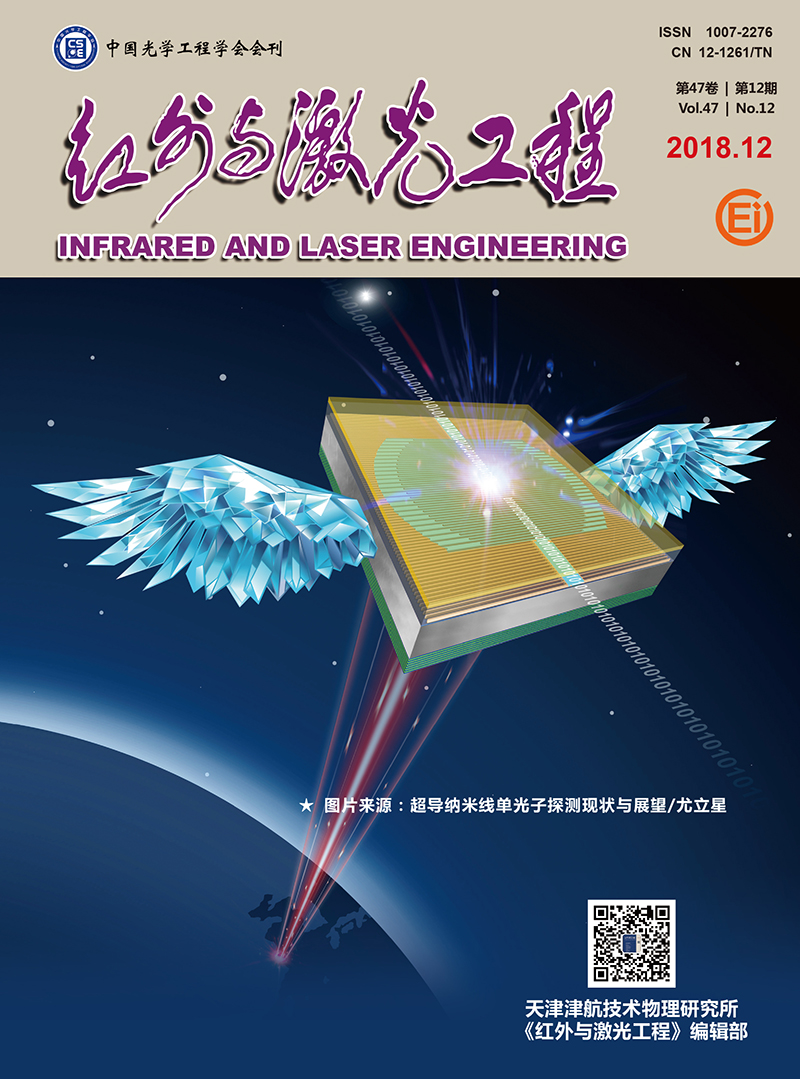|
[1]
|
Pringsheim P. Zwei bemerkungen ber den Unterschied von Lumineszenz-und Temperaturstrahlung[J]. Z Phys, 1929, 57:739-746. |
|
[2]
|
Seletskiy D V, Epstein R, Sheik-Bahae M, et al. Laser cooling in solids:advances and prospects[J]. Rep Prog Phys, 2016, 79(9):096401-096423. |
|
[3]
|
Epstein R I, Buchwald M I. Observation of laser-induced fluorescence cooling of a solids[J]. Nature, 1995, 377:500-502. |
|
[4]
|
Seletskiy D V, Sheik-Bahae M. Laser cooling of solids to cryogenic temperatures[J]. Nat Photonics, 2010, 4(3):161-164. |
|
[5]
|
Zhang J, Xiong Q H. Laser cooling of semiconductor by 40 Kelvin[J]. Nature, 2013, 493:504-508. |
|
[6]
|
Qin W P, Zhang J H. Two basic mechanism in anti-Stokes fluorescence cooling of solids[J]. Chinese Journal of Luminescence, 1999, 20(2):126-129. (in Chinese) |
|
[7]
|
Dong G, Zhang X L. Energy transfer enhanced laser cooling in Ho3+ and Tm3+ co-doped lithium yttrium fluoride[J]. J Opt Soc Am B, 2013, 30(4):939-944. |
|
[8]
|
Zhang J, Xiong Q H. Laser cooling of organic-inorganic lead halide perovskites[J]. Nat Photonics, 2016, 10(2):115-122. |
|
[9]
|
Zhong B, Yin J P. Laser cooling of Yb3+-doped LuLiF4 crystal[J]. Opt Lett, 2014, 39(9):2747-2750. |
|
[10]
|
Zhong B, Yin J P. Cavity-enhanced laser cooling for Yb3+-doped fluoride crystal using a low-power diode laser[J]. J Opt Soc Am B, 2014, 31(9):2116-2120. |
|
[11]
|
Zhang C Q, Xu L. Study on anti-Stokes fluorescent cooling technique[J]. Infrared and Laser Engineering, 2002, 31(2):95-100. (in Chinese) |
|
[12]
|
Fang H, Wu Yunong. Expectation of anti-Stokes fluorescence cooling to space remote sensing[J]. Chinese Journal of Quantum Electronics, 2004, 21(4):411-414. (in Chinese) |
|
[13]
|
MHehlenP, Sheik-Bahae M, Epstein R I, et al. Materials for optical cryocoolers[J]. J Mater Chem C, 2013, 1:7471-7478. |
|
[14]
|
Dong G Z. Research on novel mechanism for laser cooling of rare-earth doped fluoride crystals[D]. Harbin:Harbin Engineering University, 2015. (in Chinese) |
|
[15]
|
Melgaard S D, Sheik-Bahae M. Solid state optical refrigeration to sub-100 Kelvin regime[J]. Sci Rep, 2016, 6:20380-20386. |
|
[16]
|
Zhong B, Yin J P. Laser cooling of 5 mol% Yb3+:LuLiF4 crystal in air[J]. Opt Eng, 2017, 56(1):011102-011113. |
|
[17]
|
Zhong B, Yin J P. Laser cooling performance of Yb3+-doped LuLiF4 crystal[C]//Proc SPIE, 2016, 9765:976506. |
|
[18]
|
Jia Y H, Ji X M, Yin J P. Research on several parameters influencing on laser cooling of solids[J]. Acta Phys Sin, 2007, 56(3):1770-1774. (in Chinese) |
|
[19]
|
Zhong B. Laser cooling of the Yb3+-doped fluoride crystal[D]. Shanghai:East China Normal University, 2014. (in Chinese) |
|
[20]
|
Melgaard S D. Cryogenic optical refrigeration:laser cooling of solids below 123 K[D]. Albuquerque:University of New Mexico, 2013. |
|
[21]
|
Yan X P, Wang D S. Summary of anti-Stokes fluorescent cooling technique[J]. Infrared and Laser Engineering, 2008, 37(3):474-480. (in Chinese) |
|
[22]
|
Sheik-Bahae M, Epstein R I. Laser cooling of solids[J]. Laser Photonics Rev, 2009, 3(1-2):67-84. |
|
[23]
|
Edwards B C, Epstein R I. Demonstration of a solid-state optical cooler:an approach to cryogenic refrigeration[J]. J Appl Phys, 1999, 86(11):6489-6493. |
|
[24]
|
Imangholi B, Sheik-Bahae M, Epstein R I, et al. Differential luminescence thermometry in semiconductor laser cooling[C]//Proc SPIE, 2006, 6115:61151C. |









 DownLoad:
DownLoad: